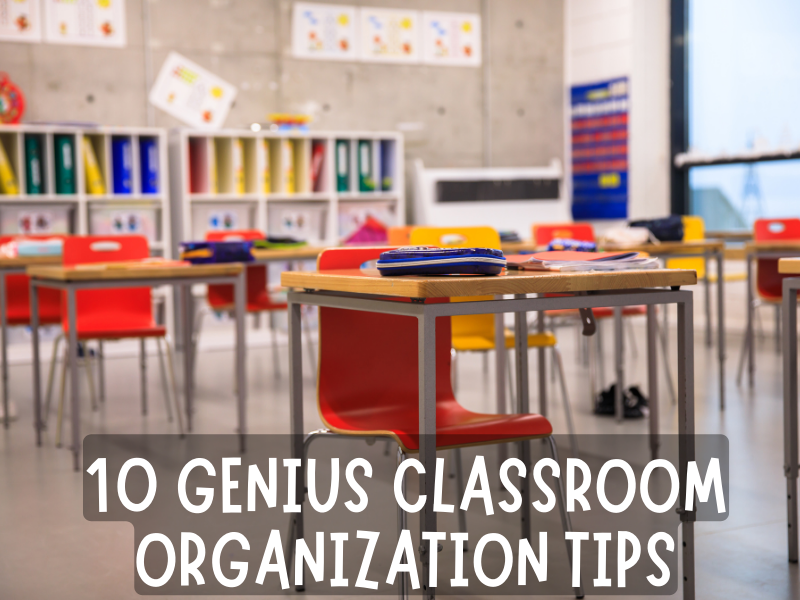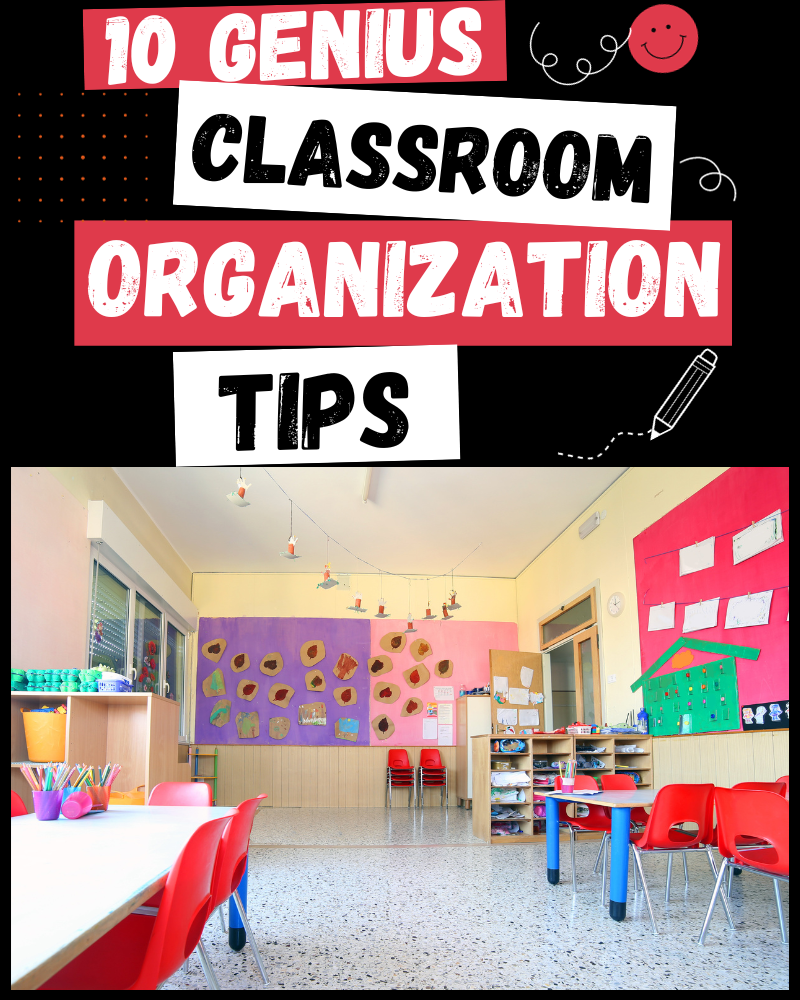Table of Contents

As a dedicated educator, maintaining a well-organized classroom is essential for both you and your students. A well-organized classroom can significantly enhance the learning environment, reduce stress, and boost productivity. In this article, we’ll explore ten genius classroom organization tips that every teacher should incorporate to create an optimal teaching and learning space.
Importance of Classroom Organization
Before delving into the specific tips, it’s vital to understand the significance of classroom organization. An organized classroom ensures that everything has its place, making it easier to find materials and resources when needed. It also helps in setting a positive example for students, teaching them essential life skills like responsibility, time management, and problem-solving.
Decluttering for Efficiency
The first step towards effective classroom organization is decluttering. Rid your classroom of unnecessary items that can create chaos and confusion. Keep only the supplies and materials that are essential for your teaching objectives.
Effective Desk Arrangement
The layout of your classroom plays a pivotal role in student engagement. Experiment with different desk arrangements to find the one that suits your teaching style and encourages student interaction.
Storage Solutions
Incorporate various storage solutions like shelves, cabinets, and bins to keep your classroom neat and tidy. Utilize clear containers for easy visibility, and label them to maintain order.
Digital Organization Tools
Embrace technology for better organization. Utilize apps and software to manage your lesson plans, schedules, and student records. This will not only save time but also reduce paper clutter.
Creating a Visual Schedule
A visual schedule helps students understand what’s happening throughout the day. It keeps them on track and minimizes disruptions. You can use a whiteboard or a digital display for this purpose.
Utilizing Labels and Color Coding
Labels and color coding are fantastic tools for keeping track of supplies and materials. Assign colors to different subjects or categories and label everything clearly. This will make it easy for both you and your students to find what they need.
Engaging Student Involvement
Involve your students in the organization process. Teach them how to clean up after activities and encourage them to take responsibility for their learning space. This fosters a sense of ownership and respect for the classroom.
Effective Time Management
Time management is crucial for both teachers and students. Plan your lessons and activities to make the most of the available time. Stick to schedules to create a sense of routine.
Maintaining Consistency
Consistency is key to maintaining an organized classroom. Establish and enforce rules for keeping the classroom tidy, and ensure that these rules are consistently followed.
Incorporating Mindfulness Techniques
Incorporate mindfulness techniques into your daily routine. A few minutes of relaxation or meditation can help create a calm and focused learning environment.
Handling Classroom Supplies
Keep a well-organized supply area to ensure that you always have the materials you need. Regularly take stock of supplies and replenish as required.
Dealing with Paperwork
The paper trail in a classroom can become overwhelming. Organize paperwork with labeled folders and filing systems. Regularly sort and recycle old materials.
Be sure to check out our Classroom Organisation Sheets
Conclusion
In conclusion, classroom organization is a vital aspect of effective teaching. These ten genius tips will not only help you maintain an organized classroom but also create a conducive learning environment. By implementing these strategies, you can reduce stress, enhance productivity, and set a positive example for your students.
FAQs
1. Why is classroom organization important for teachers? Classroom organization is crucial for teachers because it creates an efficient and effective learning environment, reduces stress, and teaches students essential life skills.
2. How can I involve students in classroom organization? You can involve students by teaching them how to clean up, encouraging responsibility, and fostering a sense of ownership in the classroom.
3. What are some digital tools for classroom organization? Some digital tools for classroom organization include apps and software for lesson planning, scheduling, and record-keeping.
4. How can color coding and labeling help with organization? Color coding and labeling make it easier to find and categorize supplies and materials, reducing the time spent searching for them.
5. Why is time management essential in the classroom? Time management helps teachers make the most of their available teaching time and creates a sense of routine for students.



